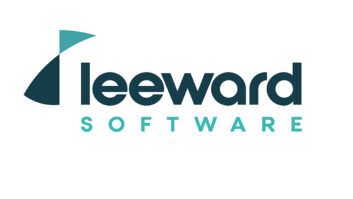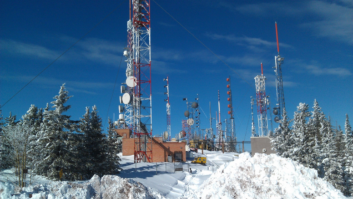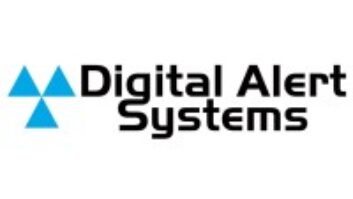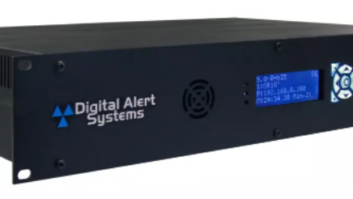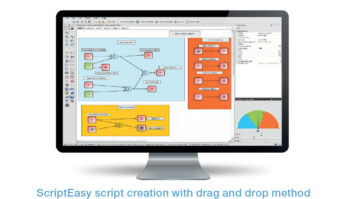The Broadcast Engineering Conference at the NAB is a yearly opportunity for broadcast engineers of all types to gather and hear pertinent presentations on challenges and changes in the technical arena. There is a wealth of information being disseminated at the Wednesday sessions, which address recent changes in AM technical rules, disaster preparedness and alerting, and issues involving towers and transmission systems.
MoM
Cris Alexander, familiar to readers as DOE of Crawford Broadcasting and columnist in Radio World and RW Engineering Extra, chairs a two-hour morning session on new AM technical rules. These went into effect in February, and according to Alexander, some stations are taking advantage of the changes now.
“The rules now permit moment method computer modeling of certain AM directional arrays in lieu of traditional proof-of-performance electric field measurements,” he said, “and already a number of ‘model proofs’ have been filed and program test authorities have been issued.”
One of the main goals of this session is to acquaint AM broadcasters with the significance of the changes and how they apply to individual stations.
To that end, the session starts with a paper by Benjamin Dawson, P.E., partner at Hatfield & Dawson Consulting Engineers, “Modeling AM Arrays,” and continues on a related topic as Ronald Rackley, P.E., partner at du Treil, Lundin and Rackley Inc., presents “Measurements for AM Modeling.”
Both of these sessions are “must-sees” for AM engineers, Alexander believes.
“Computer modeling,” he said, “represents an excellent alternative to the often open-ended traditional tune-up and proof process for eligible stations.” Dawson and Rackley will explain how a computer model that is calibrated against base impedance matrix measurements will provide a set of operating parameters to which an array can be adjusted on a carefully calibrated sampling system.
What this means for the average AM station with a directional antenna is a quicker, more reliable measurement.
“This new model-proofing process is a close-ended, fixed-cost option that will have a station operating with the correct pattern more quickly and for less money.”
John Warner, VP of AM engineering for Clear Channel Communications, brings the real world into the conference hall when he will describe a case study of WKOX(AM) in Newton, Mass. According to Alexander, Warner filed the first “model proof” under the new rules and within a few days received program test authority from the FCC.
Warner will detail the process and potential pitfalls of using the moment modeling method as part of his station’s proof.
Alexander then plans to open the session to questions, as he moderates an interactive panel discussion of moment-method computer modeling of AM arrays with several experts.
Beyond EAS
Although most of us would hope we would never face a Hurricane Katrina or worse (if that is possible), Wednesday morning’s “Disaster Preparedness and Public Alerting” offers some timely and informative discussions on just how your station can survive such an episode, moderated by Clay Freinwald, RF systems engineer for Entercom.
The session begins with “Access to Emergency and Non-Emergency Broadcast Information for People With Disabilities.”
According to Freinwald, this addresses a report and order from the commission regarding its proposed update of EAS rules.
“The R&O amounts to the FCC asking for comments on what the industry proposes to do to make EAS warnings accessible,” he said, adding that “there is not a firm resolution yet, and changes will no doubt be made.” Still, he said, this presentation will address the issues that will be considered by the FCC.
The presenters are Geoff Freed and Marcia Brooks of the Carl and Ruth Shapiro Family National Center for Accessible Media at WGBH. The center has developed prototype solutions to enable local television stations to send messages, warnings and alerts that meet the communication needs of people with disabilities.
Gil Garcia will address “Disaster Planning for Radio Stations.”
Freinwald said that Garcia will bring specific information to the audience based on his position as disaster response coordinator for Clear Channel Radio. He says there are countless things that can be overlooked prior to an actual emergency.
“For instance,” he mused, “What do you do when you need to start up the emergency generator and discover someone has stolen the diesel fuel?”
(click thumbnail)
Diagram of Clear Channel Radio’s ‘SaTL,’ or Satellite STL. Also from Clear Channel Radio, Steve Davis, senior vice president of engineering and capital management, will discuss how the company has built a second layer of station interconnectivity using Very Small Aperture Terminal Data satellite channels. Creating a “National VSAT Safety Net” would go a long way toward ensuring that emergencies that are national in scope would not disrupt the national broadcasting infrastructure, he feels.
The industry’s reliance on various means of interconnection of separated sites brings a downside, Davis argues — namely, what happens when we lose those connections. Disasters bring disruptions to WAN connectivity, which affect e-mail, databases, streaming, audio interchange and more. They cause loss of audio to one or more tower sites, typically because a land line and/or STL have failed, and loss of control of a tower site.
Clear Channel Radio decided to build an infrastructure to provide a second layer of connectivity. It installed a Ku band VSAT IP-based satellite network with built-in audio streaming capability, which the engineers call the SaTL, for Satellite STL.
Davis is followed by the presentation “One-Seg Technologies for Emergency Warning Services Based on Digital Terrestrial Television Broadcasting — Emergency Warning Broadcasting and Earthquake Early Warning.” This is by Kenichi Murayama, principal research engineer for NHK in Japan. One-Seg is a mobile, handheld TV service based on digital terrestrial television broadcasting in that country.
Although the title is a bit intimidating, Freinwald says radio too has an interest in exploring the ability to disseminate emergency information using the extra data carrying capability of DTV systems. “These technologies tend to overlap and there is an amazing amount of what I like to call cross-pollination. It is just a question of being able to recognize it.”
Radio broadcasters have the same capability within the FM IBOC stream, he asserts, so the topic should be investigated thoroughly.
Along those lines, the session “Emergency Preparedness: Essential Elements for Business Continuity When Disasters Strike” will be presented by Mitch Weinraub, executive director, products and services of Comcast Media Center, but again, is applicable to radio.
“Emergency preparedness is the same across every segment of broadcasting,” Freinwald said. “At the end of the day, when a disaster strikes, eventually station managers have to ask the question, ‘What am I doing to keep cash flow going while this situation plays out?'” This session will address the specifics of that topic, from data protection through sales and programming continuity.
The final part of this session deals with power: “Predictable, Certain and Green — Ensuring Reliable Power and Green Systems at TV Facilities and Transmitter Sites” with Gary Rackow of Active Power Inc. and Julian Rachman of DFW Consulting Group.
Backup power at many stations amounts to a few UPS units connected to a couple of PCs. But how are those tested, and more important, what happens to your operation if the power stays down for an extended period of time? There are solutions, and Freinwald says they apply across the board to mission-critical broadcast operations.
Rackow will show how those solutions can be reliable and at the same time environmentally friendly.
“This is another example of the ‘cross-pollination’ aspect of our business,” Freinwald said. “Power protection at cable headends obviously also applies to TV and radio. A lot of this technology is generic, in the fact that it is applicable across platforms, but we don’t take advantage of that.”
Protect the investment
Starting at 11 a.m. and running through 6 p.m. (with a two-hour break for lunch and returning BlackBerry messages), John Lyons, vice president and director of broadcast communications for The Durst Organization, is moderating a two-part session on Towers and Transmission Systems.
“The session is designed to give engineers a better understanding of how to safeguard and maintain towers and overall transmission systems, because after all,” he continued, “that part of the broadcast plant represents a sizable capital investment that needs to be protected.”
(click thumbnail)
Tower failure due to anchor rod corrosion. ERI’s David Davies writes: ‘Seldom does an investigator find the culprit of a crime still attached to the victim. This is a picture portraying a collapsed tower with the failed guy wire anchor shafts still attached. This steel failure occurred approximately 12 feet from the ground surface and was not detected in several tower inspections. The majority of the brownish stain on the anchor shaft is clinging dirt and the corrosion was almost entirely limited to the area of interface between the steel shaft entered the buried concrete anchor. Hence, the common inspection procedure of a shallow excavation of the anchor shaft didn’t reveal the problem.’ The session begins with “Guy Anchor Rod Corrosion: Probability, Self-Inspection, Detection and Prevention” with David Davies of ERI, who says tower collapse due to galvanic corrosion and subsequent foundation failure was last year’s second leading contributing cause of tower disasters.
This topic, Lyons said, is mundane but absolutely essential for engineers to understand.
“Specific instances of tower failures have been documented and will be discussed,” he said. As well, he said detailed information will be presented on how to recognize and deal with this unseen, but occasionally catastrophic, phenomenon.
Tim Holt of Bird Electronics continues along the same vein with “High-Power Radio Frequency Loads and Attenuators for Broadcast Applications.”
Failure modes of RF loads have changed with the initiation of digital broadcasting, and Holt will discuss the changes in design that have taken place to address these potential failures. Preventive maintenance routines are also important and will be discussed, Lyons said.
“All of the presentations of this extended session focus on the need of facilities engineers to recognize and deal with potential failures in the transmission area of broadcast stations.”
Part II of this session in the afternoon includes several presentations that deal with the topic of digital television. One of these, however, is of interest to radio engineers. Danial Fallon of ERI presents “Peak Power Ratings for Transmission Line Carrying Multi-Channel OFDM Broadcasts.” This presentation addresses the unique characteristics of Orthogonal Frequency Domain Modulation, used not only in certain TV transmissions but also in the FM IBOC arena.
“OFDM modulation has a large peak-to-average power ratio,” according to Fallon’s abstract. “When several channels are combined together to feed a broadband antenna, the transmission line may experience extremely high voltages.
“The traditional way of calculating peak powers is to find the peak voltage of each channel and then add the voltages. This approach is valid for CW operation but due to the pulsed nature of OFDM peaks it tends to oversize the line for multi-channel OFDM ensembles.”
His paper reviews peak power handling calculations and the process for arc-formation in air. It looks at the statistics and duration of OFDM peak events. The similarities and differences with 8-VSB are noted. It then introduces a peak power handling calculation relevant for short pulses. “Several specific examples of line size selection for multi-channel broadcasts are presented.”
Later, John Pinks of Nautel presents a paper, “Improved Lightning Protection for Radio Transmitter Stations.” Lyons says that the destructive nature of lightning cannot be overemphasized.
“It has always been there, and always will be,” he said, “and towers are nothing more than big lightning rods so it has to be dealt with.” Pinks discusses the anatomy of lightning energy and offers a methodology to remediate its effects by careful attention to the physical layout of the site. He also addresses ancillary damage that is caused by nearby strikes that can induce large currents in equipment and cable runs.
Don Doty, president of Stainless Inc., will present “New Consensus Standards for Construction Rigging and Protocol.” Doty has been in the tower and tower rigging business for decades and has taken note of several high-profile accidents that have occurred during rigging and constructing operations.
“The industry really needs a comprehensive set of standards that can be applied to these operations,” he said. The National Association of Tower Erectors (NATE) and The Telecommunications Industry Association, part of the American National Standards Institute (ANSI), collaborated on such a project. The new standard addresses tower erection, maintenance, modification, antenna replacement and other important protocols.
“It really amounts to an industry agreed upon ‘best practices’ standard and we are very anxious to get engineers’ reactions to it at the show.”
Also Wednesday, Myron Fanton of ERI will address “RF Measurement Techniques for Broadcast Engineers.” He notes that with so many areas in which engineers must be proficient, RF technology may be a lower priority.
“The discussion details the measuring and troubleshooting of transmission systems, elbows, tuners, transmission lines, and antennas,” according to the abstract. He’ll also talk about the Vector Network Analyzer equipment used to perform measurements, outlining modern techniques for system measurements. Fanton will discuss a large RF system example and talk about system reflections and troubleshooting sources of large reflections.










